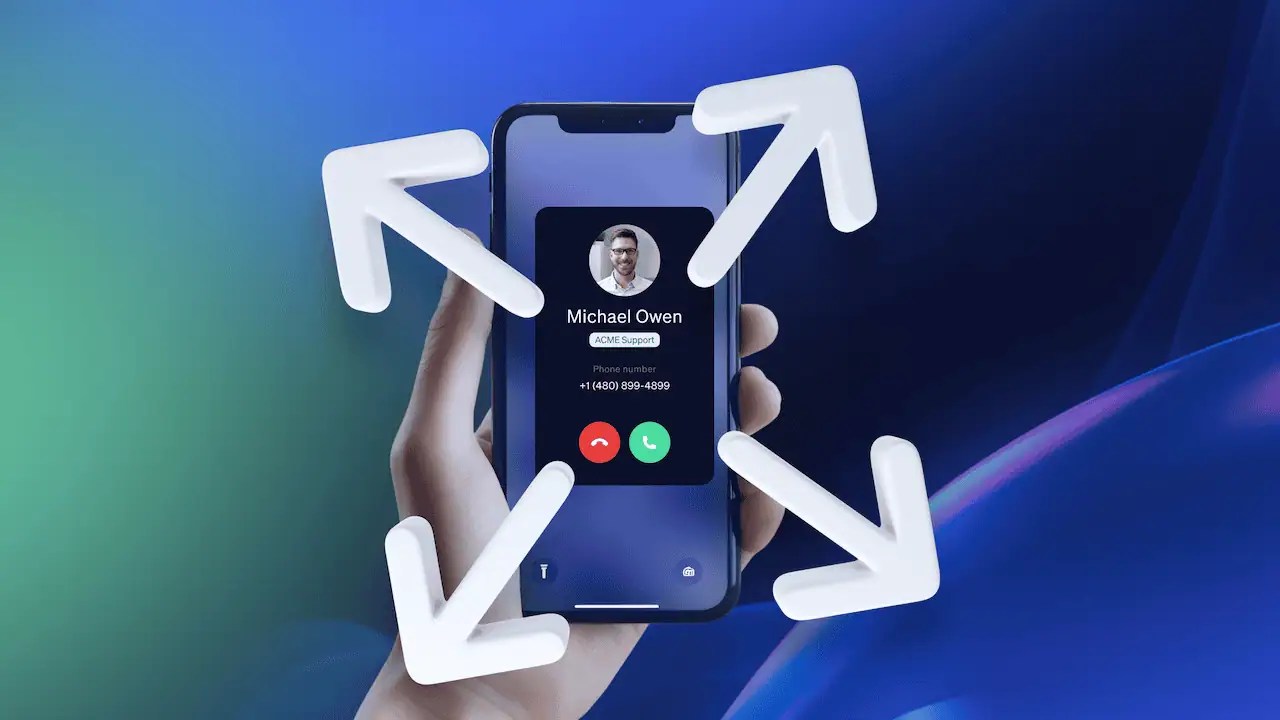Conversational marketing examples can make it really easy to understand the importance of using this technique. Imagine you’re shopping for a new laptop online. You have 10 tabs open, each with a different model, and you’ve already gone back and forth comparing prices and features.
Suddenly, a chat window pops up asking if you need help. It asks you to type in your budget and main uses for the laptop and immediately suggests three models that fit your criteria. It offers to compare specs, shows you user reviews, and even schedules a video call with a sales rep to answer your more detailed questions.
This is an example of conversational marketing, a modern inbound marketing method in which the brand and the customer have meaningful, real-time conversations.
Traditional marketing methods, like email newsletters, make communication between your company and customers one-sided. Conversational marketing, on the other hand, allows for a more personalized and immediate back-and-forth dialogue.
In this guide, you’ll read about three examples of conversational marketing, five benefits it can bring your organization, and some dos and don’ts to help you get started with the implementation process.
Conversational Marketing Examples
Here are three primary examples of conversational marketing:
- Chatbots: Best for shortening the sales cycle and boosting lead generation
- Social media messaging: Best for enhancing customer service and driving product demos
- Live chat: Best for providing real-time support to website visitors and scaling customer success (CS) programs
Here’s a closer look at each example:
1. Chatbots
Conversational chatbots use AI and technologies like machine learning and natural language processing to simulate a natural conversation with your customers and prospects. In e-commerce, chatbots can help answer product questions, recommend items, and guide customers through the buying journey.
Here’s an example from 1-800-Flowers.com, a flower delivery company:

Chatbots can also be a valuable tool for lead generation. They can start conversations with website visitors and ask relevant questions to qualify them as leads. The bots can also offer helpful information like answers to FAQs and guides to nurture visitors’ interest.
If the potential lead fits your criteria, the chatbot can encourage them to book a call with your sales team or take some other desired action to help you increase conversion rates.
2. Social media messaging
Social media messaging lets you provide real-time customer service and sales support through platforms like Facebook Messenger and Instagram DMs. You can use messaging apps to quickly address issues, answer questions, and build rapport with customers directly on social media platforms.
For example, KLM Royal Dutch Airlines uses BlueBot (BB), an AI service bot, to help customers book tickets without agent intervention. All people have to do is message BB on Facebook Messenger and tell it where and when they want to fly. This is how it works:

You can also use social media messaging to help you drive sales and product demos by engaging clients directly on platforms they already use.

Using social media messaging for customer support and sales can turn casual browsers into loyal customers by providing quick, personalized help exactly where they spend their time online.
3. Live chat
This conversational channel lets you engage consumers in real time. You can use it to give potential customers immediate, personalized support right on your website, answer their questions, resolve their issues, and guide them through their decision-making processes.
For example, you can implement a chat widget that pops up when people visit a particular section of your website — like your pricing page — or spend a certain amount of time browsing your site.
Then, you can have either an agent or an AI bot offer to help them. For instance, if someone has spent over 10 minutes looking at your pricing plans, the chatbot can offer a personalized consultation to explain features or schedule a live demo to show how your products can meet their needs.
Here’s how Lavender.ai, an AI sales email coach, uses this functionality to engage visitors:

You can also use live chat to scale CS programs.
For example, when users log in to your platform, you can trigger personalized messages about new features relevant to their usage patterns or upcoming training webinars. Or you can set up automation to suggest and schedule quarterly check-ins based on the user’s activity and account health metrics.
This approach helps you reach more customers with targeted, valuable information without increasing your team’s head count.
Top Benefits of Conversational Marketing
Implementing conversational marketing helps you enhance your CX by offering more personalized, proactive, and timely service across all your communication channels.
It also makes getting to know your prospects and their needs easier. This allows you to build stronger relationships that increase customer loyalty and retention, bolstering your bottom line.
Let’s look at these benefits in more detail:
Brands can deliver a more personalized CX
Conversational marketing tools use real-time interactions to gather information about the customer’s needs and preferences. Then, the tools apply this data to tailor product recommendations, content, and support.
For instance, when a consumer visits an online clothing store, a conversational AI chatbot can ask about their style preferences and size and suggest outfits that suit their taste.
Here’s a real-life example from Beauty Genius, L’Oréal Paris’s AI beauty assistant:

💡 Did you know? The more personalized the experience, the higher the likelihood of customers coming back, making repeat purchases, and recommending your brand to others. In fact, according to Adobe Experience Cloud’s State of Digital Customer Experience report, a highly personalized experience was the second most important factor in making customer interactions more memorable, surpassed only by having a positive experience with customer service reps.
Drive relevant, real-time engagement
Solutions like chatbots, live chat, or messaging platforms can be made available 24/7. So, you can interact with prospects the moment they need help or information. This means your customers can instantly resolve basic inquiries without having to wait for traditional support hours.
For example, a customer browsing an e-commerce site late at night might have a question about product specifications. Instead of waiting for business hours to contact support personnel, they can get an immediate answer from a chatbot, potentially leading to a quicker purchase decision.
Contact center solutions like this help you improve customer satisfaction while reducing your staff’s workload.

Improve proactive customer and prospect outreach
Conversational marketing tools can often track customer actions on websites, apps, or social media platforms. And these tools can identify patterns like frequent visits to a specific product page, abandoned carts, or engagement with specific content. Based on these insights, the systems can automatically trigger personalized outreach.
Let’s say a customer has spent a long time comparing different software plans but hasn’t made a purchase. A conversational AI solution could start a conversation offering a side-by-side feature comparison or a limited-time discount.
Over time, proactive outreach through conversational marketing can significantly reduce customer churn by addressing pain points early and continually demonstrating a product’s value throughout the customer life cycle.
💡 Did you know? Proactive customer service can notably impact key performance metrics. According to Gartner, proactive customer service can drive a full percentage point increase in your net promoter score, customer satisfaction score, customer effort score, and value enhancement score.
Provide omnichannel communication throughout the customer journey
Your current and potential customers want to reach you on their own time, from whatever communication channels they prefer. And they want to have a positive experience no matter where the interaction begins. Implementing tools like chatbots on your site, within apps, and on social media platforms gives you a consistent way to engage with people across multiple touchpoints.
Let’s say a customer is browsing for running shoes on your website. They close their tab and later follow your brand while scrolling through Instagram.
When they message your brand’s Instagram account, they’ll encounter a similar chatbot interface, which will provide the same prompt and helpful responses they received on your website.
Develop a better understanding of website visitors
People are more inclined to share details about their needs and challenges during a natural conversation than through traditional methods like filling out forms.
For example, instead of just selecting the phrase “budget constraints” on a drop-down menu, a prospect might tell your virtual agents that they’re looking for a scalable solution because they’re rapidly growing their team but are worried about the initial costs. Knowing this lets you recommend a tailored solution that’s more likely to end in a sale.

Instead of sending a generic email with standard product information and pricing, you can offer a personalized proposal that includes a cost-effective plan and highlights how the solution can grow with their team. Over time, this data informs improvements to your marketing campaigns, product development, and sales processes.
Dos and Don’ts of Conversational Marketing
Here are some best practices to keep in mind when implementing conversational marketing at your company:
Dos
- Focus on value: Prioritize offering helpful and relevant information to your customers rather than pushing products or services. When they ask questions, provide clear answers and practical solutions that directly address their needs. This builds trust and shows that your business is genuinely interested in solving their problems and not just in making a sale.
- Offer multiple channels: Make sure your customers can reach you through various channels like live chat, social media messaging, SMS, and phone because people have different preferences when it comes to communication.
- Maintain a human touch: Keep the tone of chatbot conversations personal and empathetic. Use friendly language, acknowledge customer concerns, and, where appropriate, add a bit of personality to make interactions feel more genuine. And always give people the option to speak to an agent.
- Be transparent: Let your customers know up front if you’re using AI bots and automations. Clearly explain what the technology can and can’t do and how you’re handling their data. This transparency helps build trust and ensures a smoother interaction. Here’s an example of how Semrush’s chatbot does this:

Don’ts
- Don’t leave conversations hanging: Use automated reminders or follow-up messages to ensure the customer feels their question was fully answered. For example, if a customer asks about a product’s availability but doesn’t buy it, send a follow-up message saying, “Did you find what you were looking for? Let us know if you have any other questions or need help with your order.”
- Don’t use generic responses: Avoid repetitive, scripted language. Instead, use your CRM data to craft responses addressing each customer’s needs and concerns. Train your team to use templates as a guide and to personalize each interaction based on the customer’s situation.
- Don’t ignore customer data: Use the data you collect from interactions to refine your approach and enhance future conversations. Regularly review this data with your marketing and customer service teams to identify trends, and then adjust your strategies accordingly.
- Don’t personalize too much: Keep in mind that 47% of customers will stop interacting with a company if their experiences are more personalized than they’re comfortable with. Be careful not to overwhelm customers with overly specific or intrusive messages. Focus on key areas like product recommendations or service reminders that enhance the user experience without feeling invasive.
Make Your Digital Marketing Efforts More Memorable With Nextiva
A conversational marketing strategy boosts customer engagement and brand awareness through personalized, real-time interactions. Paired with AI, it can also increase team efficiency and make it easier to scale your customer service.
But if the strategy is not implemented correctly, you risk making your brand seem impersonal and uncaring.
Nextiva’s conversational marketing platform helps you solve customer issues faster and deliver personalized services without losing the human touch. It combines the speed and efficiency of AI with the warmth of real interactions, keeping your brand approachable and customer-friendly.
But don’t take our word for it. Try out this full-scale solution for yourself today!

















 Marketing & Sales
Marketing & Sales 











